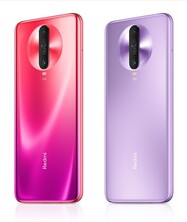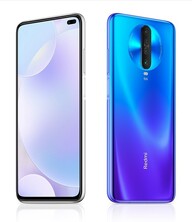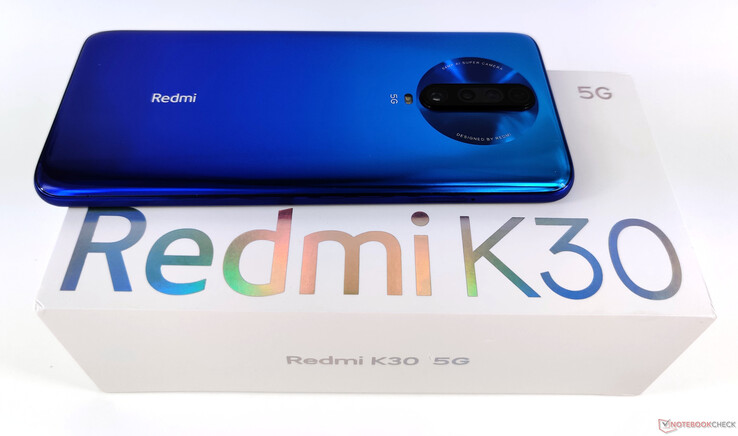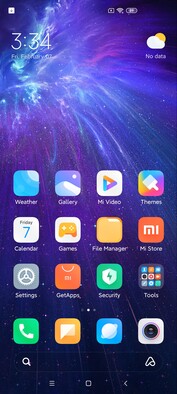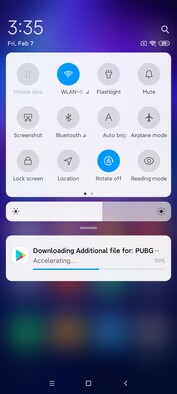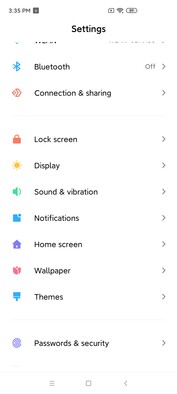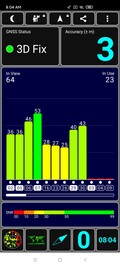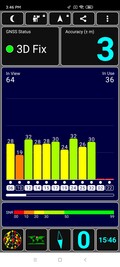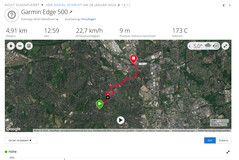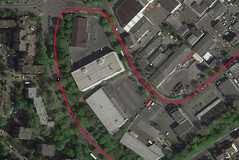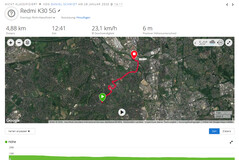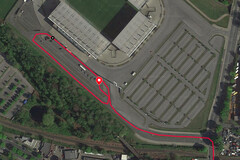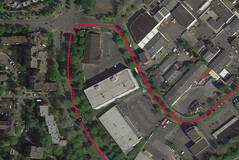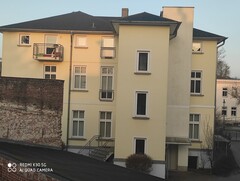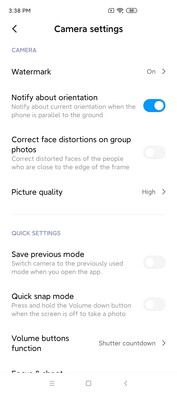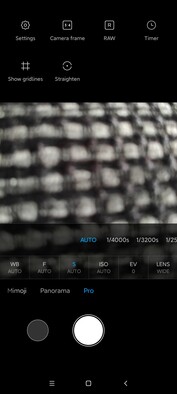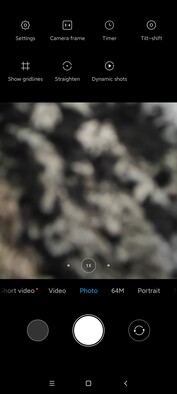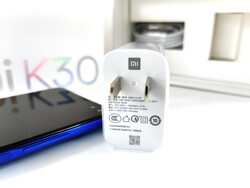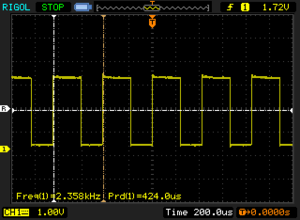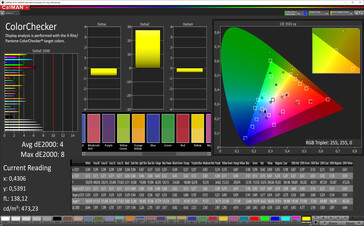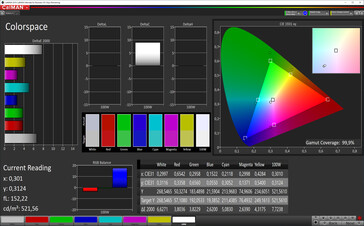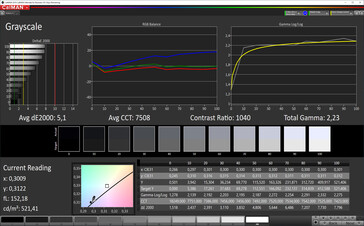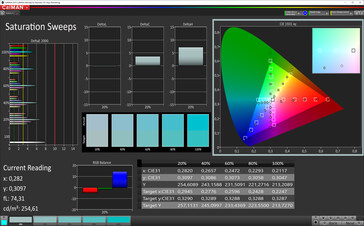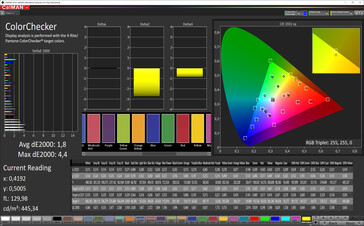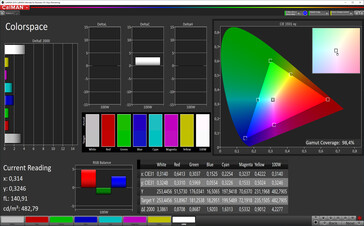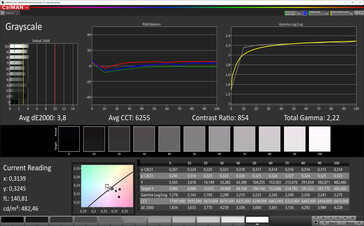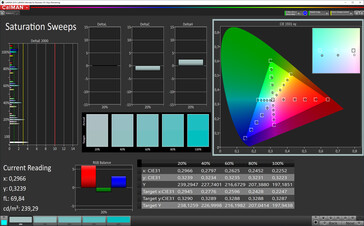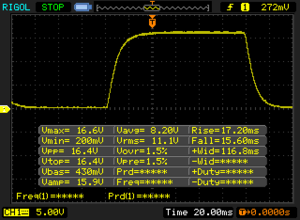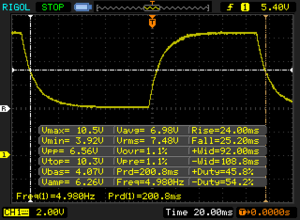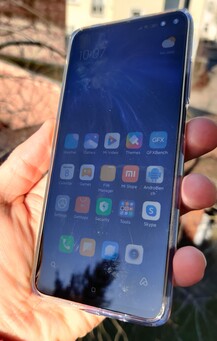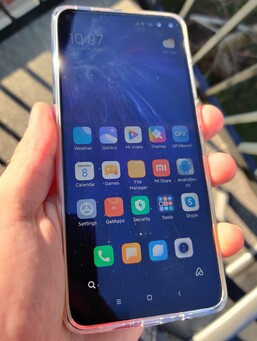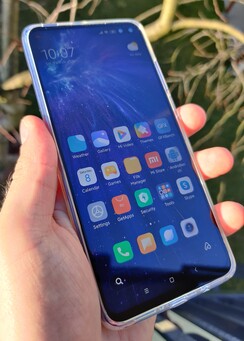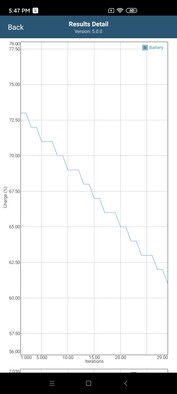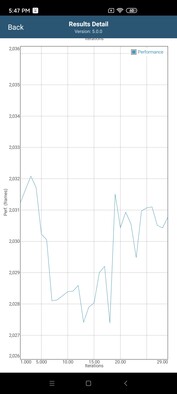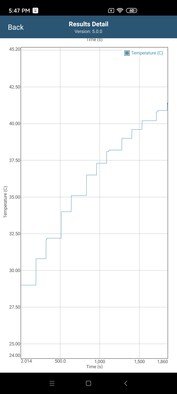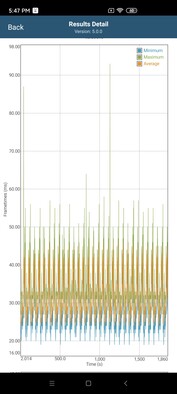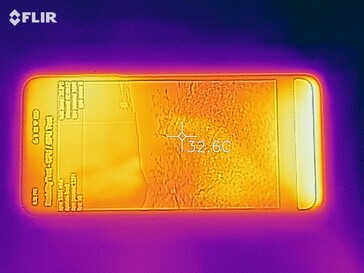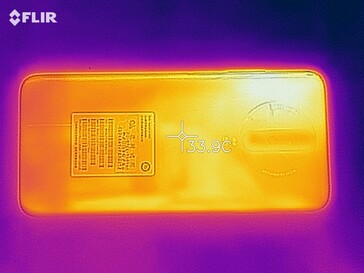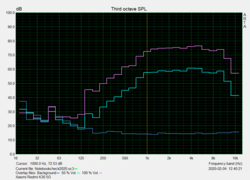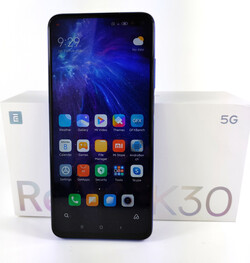Xiaomi Redmi K30 5G Smartphone Review: A 5G smartphone with a 120 Hz screen at a bargain price
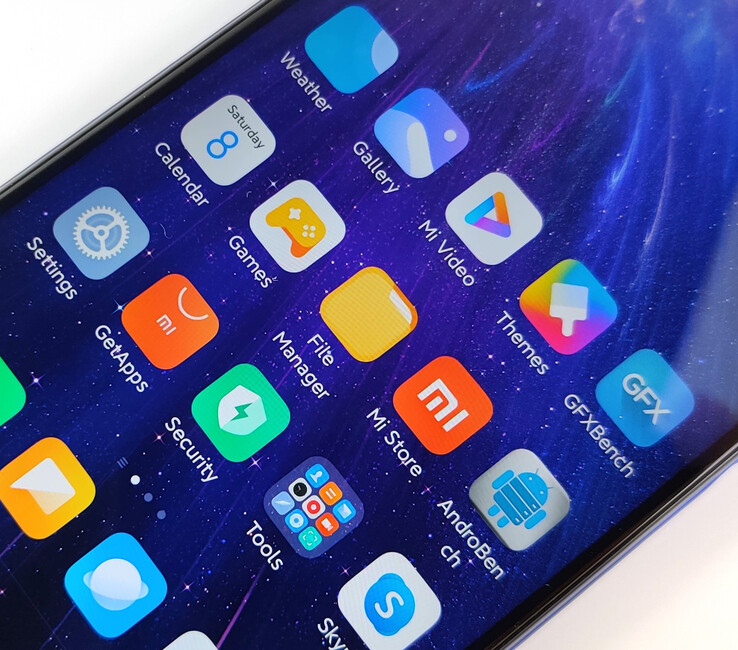
The Redmi K30 5G from Xiaomi, available since January of this year, is the first smartphone with Qualcomm's latest Snapdragon 765G SoC. In contrast to the “regular” 4G Redmi K30, which is based on the Snapdragon 730G, the Redmi K30 5G has slightly faster wired charging and supports the newer Bluetooth 5.1 standard.
The design of the Redmi K30 models differs only marginally, too. In both cases, Xiaomi has adorned the front with a 6.67-inch IPS display, specifically one with a 120 Hz refresh rate, and there are quad rear-facing cameras. The new 64 MP Sony IMX686 also acts as the main camera for both devices.
The cheapest Redmi K30 SKU comes with 6 GB of RAM and 128 GB of storage. Currently, the device can be purchased for around 260 Euros (~$281) from third-party retailers like Trading Shenzhen. However, the cheapest 5G model starts at about 300 Euros (~$324), a surcharge of 40 Euros (~$43). Meanwhile, the top-of-the-line model, the Redmi K30 5G with 8 GB of RAM and 256 GB of storage, currently retails for 430 Euros (~$465). Xiaomi sells the Redmi K30 as the POCO X2 in India, albeit through the newly established POCO sub-brand. We expect the device to launch as the Pocophone X2 in Europe too, although Xiaomi is yet to confirm that this will be the case.
Device Comparison
Rating | Date | Model | Weight | Drive | Size | Resolution | Price |
|---|---|---|---|---|---|---|---|
| 82 % v7 (old) | 02 / 2020 | Xiaomi Redmi K30 5G SD 765G, Adreno 620 | 208 g | 128 GB UFS 2.1 Flash | 6.67" | 2400x1080 | |
| 79.7 % v7 (old) | 01 / 2020 | Realme XT SD 712, Adreno 616 | 183 g | 64 GB UFS 2.0 Flash | 6.40" | 2340x1080 | |
| 81.6 % v7 (old) | 07 / 2019 | Xiaomi Mi 9T SD 730, Adreno 618 | 191 g | 64 GB UFS 2.0 Flash | 6.39" | 2340x1080 | |
| 78.6 % v7 (old) | 11 / 2019 | Nokia 7.2 SD 660, Adreno 512 | 180 g | 64 GB eMMC Flash | 6.30" | 2340x1080 | |
| 79.8 % v7 (old) | 01 / 2020 | Samsung Galaxy A51 Exynos 9611, Mali-G72 MP3 | 172 g | 128 GB UFS 2.0 Flash | 6.50" | 2400x1080 | |
| 79 % v7 (old) | 01 / 2020 | Huawei P30 Lite New Edition Kirin 710, Mali-G51 MP4 | 159 g | 256 GB UFS 2.1 Flash | 6.15" | 2312x1080 |
Case - The Redmi K30 has a 3.5 mm jack
The front of the Redmi K30 5G is made of scratch-resistant Corning Gorilla Glass 5, which Xiaomi has rounded off into the device's metal frame. The curved back is also made of glass and comes in blue, red, purple or white. The Redmi K30 remains comfortable to hold because of its rounded back panel, but it is not exactly compact at 165.3 x 76.6 mm and 200 g.
The quality of workmanship and choice of materials are beyond any criticisms considering the device's modest pricing. The built-in physical buttons on the right-hand side of the device also sit firmly within the frames. The Xiaomi phone does not have IP certification, though.
The 6.67-inch IPS display has thin bezels too, with Xiaomi only interrupting it with a punch-hole front-facing camera. The latter looks quite massive because of the presence of a dual-camera array though, like the Samsung Galaxy S10 Plus. The Redmi K30 has an 86% screen-to-body ratio, for reference.
Connectivity - A mid-range Xiaomi smartphone with UFS 2.1 storage
In addition to a fingerprint sensor and dual-SIM functionality, the Redmi K30 includes a "classic" 3.5 mm jack, an IR port and Miracast support. However, the device's Widevine DRM Level 3 certification limits it to streaming DRM-protected content in SD. This may only apply to the Chinese version, though.
After the initial setup, our review unit offers about 107 GB of its 128 GB internal storage. If you need more space, then we would recommend buying the 256 GB version as the device does not support microSD card expansion.
The Redmi K30 also has a Type-C port, which operates on the older USB 2.0 standard. The port supports USB-OTG for connecting external peripherals like USB sticks. The Redmi K30 does not support wireless charging.
Software - MIUI 11 and Android 10 out of the box for the Redmi K30
As usual, Xiaomi ships the Redmi K30 with MIUI, its custom version of Android. Our review unit arrived running Android 10 builds of MIUI 11, specifically V11.0.9.0.QGICNXM. The build includes the January 2020 set of Android security patches.
Please keep in mind that Xiaomi does not include Google services (GMS) like the Play Store with Chinese versions of its handsets. The company preinstalls its versions instead, but you can sideload GMS if necessary. Third-party retailers like Trading Shenzhen offer a How-To on how to do so, as do other websites. You may still run into trouble using this method though as your handset will not be Google certified. Xiaomi sells European, Global and Indian versions of most of its smartphones too, though.
However, it remains uncertain whether Xiaomi will release a global version of the Redmi K30. The POCO X2 should ship with GMS, though. There is no official word yet on whether the device will hit European shores at the time of writing.
Communication & GPS - 5G and NFC for the Redmi K30 5G
Xiaomi equips the Redmi K30 5G with two nano-SIM card slots for dual-SIM functionality. The Redmi K30 5G supports LTE on both SIM cards, albeit with a relatively small coverage of LTE bands. The device only supports 11 LTE bands, with the likes of Band 28 and Band 20 being some notable omissions. These will likely become more readily used in the future. The Qualcomm Snapdragon X52 modem in the Redmi K30 5G also supports 5G, theoretically allowing the device to reach up to 3.7 Gb/s download speeds. You must be connected to a 5G network to achieve these speeds, though. Bluetooth 5.1 is available, as is NFC.
The integrated Wi-Fi module supports up to IEEE 802.11ac and can connect to 2.4 or 5 GHz networks. The Redmi K30 5G has MIMO-2x2 antennas too, which helped our review unit average close to 700 Mb/s download speeds. Transfer speeds could be more consistent though, with the Redmi K30 fluctuating between 345 Mb/s and 697 Mb/s when connected to our Netgear Nighthawk AX12 reference router.
| Networking | |
| iperf3 transmit AX12 | |
| Xiaomi Redmi K30 5G | |
| Samsung Galaxy A51 | |
| Nokia 7.2 | |
| Xiaomi Mi 9T | |
| Realme XT | |
| Huawei P30 Lite New Edition | |
| iperf3 receive AX12 | |
| Xiaomi Redmi K30 5G | |
| Nokia 7.2 | |
| Xiaomi Mi 9T | |
| Realme XT | |
| Samsung Galaxy A51 | |
| Huawei P30 Lite New Edition | |
The Redmi K30 5G uses BeiDou, Galileo, GLONASS and GPS, for location services, along with SBAS. Our review unit achieved a satfix with up three metres accuracy almost immediately and regardless of where we tested it.
We also took the Redmi K30 5G on a bike ride to compare its location data against that recorded by a Garmin Edge 500, one of our reference bike computers. There was only 30 metres between the mid-range Xiaomi and the professional navigation system at the end of our almost 5 km test route, demonstrating the accuracy of the Redmi K30 5G here. It plotted our route precisely, too.
Telephone Functions & Call Quality - A Xiaomi smartphone that masters dual VoLTE
Our review unit also has good call quality. Disruptive dropouts did not occur during our tests, although we found that the person on the other end of the line sounded somewhat tinny. Likewise, voices often sounded overly quiet, especially during video calls. More pressingly, our review unit's microphones generate a strong beeping sound when using Skype. Trading Shenzhen will be kindly sending us another device to determine whether this is a more widespread issue.
The Redmi K30 5G supports dual voice over LTE (VoLTE), too. However, only Chinese carriers support this functionality on the Chinese model, according to Xiaomi.
Cameras - Quad cameras with a 64 MP IMX686 main sensor
The Sony IMX686 uses pixel binning as the IMX586 does, meaning that it combines 2x2 adjacent pixels to form one large pixel that contains more light than a regular single pixel would. In practice, this means that the Redmi K30 5G takes 16 MP photos by default. While pixel binning offers better low-light performance than shooting in 64 MP would, this discipline is a weak point of the Redmi K30 5G compared to the current smartphone elite. Overall, low-light photos are poorly lit, grainy and lacking sharpness. By contrast, the Redmi K30 5G has no such issues in daylight conditions, where it captures objects in high levels of detail and with good colour reproduction. The camera still fragments some pixels at the edges of images, though. In short, the Redmi K30 5G produces comparatively sharp shots for a smartphone at this price.
The 120° ultra-wide-angle sensor, which has an f/2.2 aperture, also offers good image sharpness. However, sharpness levels visibly drop off outside the centre of the image. The ultra-wide-angle sensor cannot compete with the detail and brightness that the 48 MP Sony IMX586 offers, for example. The same applies to the 5 MP macro sensor, the image quality of which is rather disappointing.
We shall be publishing an IMX586 vs. IMX686 article shortly, too. We shall provide a link when this is live.
We also examined the colour accuracy of the IMX686 under controlled lighting conditions. According to ColorChecker reference colours, the 64 MP sensor tends to over-brighten colours. X-Rite ColorChecker Passport shows that the sensor has solid colour accuracy overall, though. However, white tones always look too warm for our liking.
We used our test chart to assess how sharply the IMX686 can reproduce fine details and structures. Under controlled lighting conditions again, the IMX686 succeeds with decent sharpness levels at the centre of the shot, but there are some colour artefacts. Image blur is limited to peripheral areas, though.
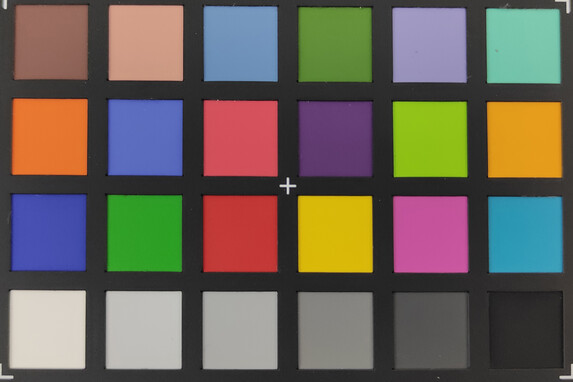

Accessories & Warranty - Xiaomi includes a case and a 30 W charger in the box
In addition to the Redmi K30 5G, Xiaomi includes a 30 W charger, a corresponding USB cable and a silicone case. Trading Shenzhen bundles an EU adapter too, but Xiaomi would include a region-specific charger with Global units.
Xiaomi also grants the Redmi K30 5G a 12-month limited manufacturer's warranty. However, importing a Chinese model from retailers like Trading Shenzhen means that you must return the device to China for a warranty repair. However, retailers should grant separate warranty coverage, too. Please see our Guarantees, Return Policies & Warranties FAQ for country-specific information.
Input Devices & Operation - The Redmi K30 has a side-mounted fingerprint sensor
The 10-point multitouch touchscreen implements inputs quickly and reliably, even into the corners of the Redmi K30 5G's 6.67-inch display. Using the device feels buttery smooth too, principally because of the display's 120 Hz refresh rate.
Xiaomi has also equipped the Redmi K30 5G with a side-mounted fingerprint sensor, which doubles as a power button. We have no complaints about either the speed or the recognition rate of the sensor, but its positioning may take some acclimatisation. You could use the front-facing camera to unlock the device too using its 2D face-recognition software. The facial recognition worked reliably and quickly during our tests, but it is not as secure as using a fingerprint.
Display - A Xiaomi smartphone with a 120 Hz IPS panel
The 6.67-inch display in the Redmi K30 is a 120 Hz LCD panel. The HDR-10 certified display also operates natively at 2340x1080 pixels, yielding a pixel density of almost 400 PPI. The latter measurement puts the Xiaomi smartphone on par with our comparison devices, for reference.
Our review unit achieved a peak average brightness of 643 cd/m² according to X-Rite i1Pro 2, although the display uses pulse width modulation to regulate luminosity. Additionally, while the panel in our review unit is 93% evenly lit, we noticed some slight halos around the front-facing cameras.
Additionally, the more practical APL50 test, which evenly distributes light and dark areas across the display to measure luminosity, records an average peak value of 654 cd/m². This only applies to when the display is set to automatic brightness though, as peak luminosity drops to 528 cd/m² on manual brightness.
| |||||||||||||||||||||||||
Brightness Distribution: 93 %
Center on Battery: 658 cd/m²
Contrast: 1343:1 (Black: 0.49 cd/m²)
ΔE ColorChecker Calman: 1.8 | ∀{0.5-29.43 Ø4.78}
ΔE Greyscale Calman: 3.8 | ∀{0.09-98 Ø5}
98.4% sRGB (Calman 2D)
Gamma: 2.22
CCT: 6255 K
| Xiaomi Redmi K30 5G LCD IPS, 2400x1080, 6.7" | Realme XT Super AMOLED, 2340x1080, 6.4" | Xiaomi Mi 9T AMOLED, 2340x1080, 6.4" | Nokia 7.2 IPS, 2340x1080, 6.3" | Samsung Galaxy A51 AMOLED, 2400x1080, 6.5" | Huawei P30 Lite New Edition IPS, 2312x1080, 6.2" | |
|---|---|---|---|---|---|---|
| Screen | -64% | -1% | -47% | -16% | -40% | |
| Brightness middle (cd/m²) | 658 | 414 -37% | 589 -10% | 604 -8% | 589 -10% | 507 -23% |
| Brightness (cd/m²) | 643 | 414 -36% | 589 -8% | 593 -8% | 589 -8% | 481 -25% |
| Brightness Distribution (%) | 93 | 97 4% | 96 3% | 92 -1% | 94 1% | 88 -5% |
| Black Level * (cd/m²) | 0.49 | 0.4 18% | 0.38 22% | |||
| Contrast (:1) | 1343 | 1510 12% | 1334 -1% | |||
| Colorchecker dE 2000 * | 1.8 | 4.4 -144% | 2.5 -39% | 5.1 -183% | 2.22 -23% | 4.72 -162% |
| Colorchecker dE 2000 max. * | 4.4 | 11.2 -155% | 4.9 -11% | 10.3 -134% | 8.24 -87% | 7.84 -78% |
| Greyscale dE 2000 * | 3.8 | 4.3 -13% | 1.6 58% | 6.4 -68% | 2.6 32% | 5.5 -45% |
| Gamma | 2.22 99% | 2.31 95% | 2.24 98% | 2.23 99% | 2.111 104% | 2.158 102% |
| CCT | 6255 104% | 6532 100% | 6544 99% | 8149 80% | 6508 100% | 7596 86% |
* ... smaller is better
Screen Flickering / PWM (Pulse-Width Modulation)
| Screen flickering / PWM detected | 2358 Hz | ≤ 43 % brightness setting | |
The display backlight flickers at 2358 Hz (worst case, e.g., utilizing PWM) Flickering detected at a brightness setting of 43 % and below. There should be no flickering or PWM above this brightness setting. The frequency of 2358 Hz is quite high, so most users sensitive to PWM should not notice any flickering. In comparison: 53 % of all tested devices do not use PWM to dim the display. If PWM was detected, an average of 8111 (minimum: 5 - maximum: 343500) Hz was measured. | |||
Compared to the OLED competition, the LCD panel in the K30 5G clearly is at a contrast and black value disadvantage. However, it still achieved a respectable 1,343:1 contrast ratio. APL50 measures a contrast ratio of 1,234:1 and a black value of 0.53 cd/m², which are both slightly lower than what X-Rite i1Pro 2 measured.
Photo spectrometer and CalMAN analysis determined that the Redmi K30 5G has DeltaE deviations of 1.8 for colours and 3.8 for greyscale from the sRGB colour space when set to the standard colour profile. Both are impressively low for a mid-range smartphone, especially one with an LCD panel. Likewise, our review unit's colour temperature of 6,255 K is only slightly warmer than the ideal value of 6,500 K.
Display Response Times
| ↔ Response Time Black to White | ||
|---|---|---|
| 32.8 ms ... rise ↗ and fall ↘ combined | ↗ 17.2 ms rise | |
| ↘ 15.6 ms fall | ||
| The screen shows slow response rates in our tests and will be unsatisfactory for gamers. In comparison, all tested devices range from 0.1 (minimum) to 240 (maximum) ms. » 88 % of all devices are better. This means that the measured response time is worse than the average of all tested devices (20.2 ms). | ||
| ↔ Response Time 50% Grey to 80% Grey | ||
| 49.2 ms ... rise ↗ and fall ↘ combined | ↗ 24 ms rise | |
| ↘ 25.2 ms fall | ||
| The screen shows slow response rates in our tests and will be unsatisfactory for gamers. In comparison, all tested devices range from 0.165 (minimum) to 636 (maximum) ms. » 85 % of all devices are better. This means that the measured response time is worse than the average of all tested devices (31.6 ms). | ||
Performance - A Qualcomm Snapdragon 765G and 8 GB of RAM onboard
The Redmi K30 5G is equipped with the Snapdragon 765G. The SoC has two clusters, with two ARM Cortex-A76 cores and six Cortex-A55 cores. While the latter can clock up to 1.8 GHz on each core, the former contains a prime core that can reach 2.4 GHz and a gold core that peaks at 2.2 GHz.
There is also an Adreno 620 GPU onboard that supports up to 1080p displays and 120 Hz refresh rates. The G version of the Snapdragon 765 also includes select Snapdragon elite gaming features like Game Smoother, Game Fast Loader and Game Network Latency Manager.
The Qualcomm CPU made a decent impression in synthetic benchmarks. The Redmi K30 5G sits at the forefront of our benchmark comparison tables, but the leap from the Snapdragon 730 to the Snapdragon 765G is not groundbreaking. The situation is different with the graphics benchmarks, though. The Adreno 620 represents a leap forward in graphics performance from the Adreno 618 or Adreno 616, for example.
Overall, the new mid-range processor and built-in 8 GB of RAM ensure good system performance in everyday life. Applications load quickly, for example, particularly because of the device's fast UFS flash storage. Likewise, the high refresh-rate display makes animations look very smooth.
| Geekbench 4.0 | |
| Compute RenderScript Score (sort by value) | |
| Xiaomi Redmi K30 5G | |
| Xiaomi Mi 9T | |
| Average Qualcomm Snapdragon 765G (n=1) | |
| 64 Bit Multi-Core Score (sort by value) | |
| Xiaomi Redmi K30 5G | |
| Xiaomi Mi 9T | |
| Average Qualcomm Snapdragon 765G (n=1) | |
| 64 Bit Single-Core Score (sort by value) | |
| Xiaomi Redmi K30 5G | |
| Xiaomi Mi 9T | |
| Average Qualcomm Snapdragon 765G (n=1) | |
| Basemark GPU 1.1 | |
| 1920x1080 Vulkan Medium Offscreen (sort by value) | |
| Xiaomi Redmi K30 5G | |
| Xiaomi Mi 9T | |
| Average Qualcomm Snapdragon 765G (n=1) | |
| Vulkan Medium Native (sort by value) | |
| Xiaomi Redmi K30 5G | |
| Xiaomi Mi 9T | |
| 1920x1080 OpenGL Medium Offscreen (sort by value) | |
| Xiaomi Redmi K30 5G | |
| Xiaomi Mi 9T | |
| Average Qualcomm Snapdragon 765G (n=1) | |
| VRMark - Amber Room (sort by value) | |
| Xiaomi Redmi K30 5G | |
| Xiaomi Mi 9T | |
| Average Qualcomm Snapdragon 765G (n=1) | |
The K30 5G does a good job when surfing the web, too. With the subsequently installed Chrome browser, navigation within complex websites is quick and smooth. The Redmi K30 5G also achieved good results in browser benchmarks and placed well ahead of the Xiaomi Mi 9T.
| Jetstream 2 - 2.0 Total Score | |
| Average of class Smartphone (23.8 - 387, n=152, last 2 years) | |
| Xiaomi Redmi K30 5G (Chrome 80) | |
| Average Qualcomm Snapdragon 765G (15.8 - 60.5, n=12) | |
| Xiaomi Mi 9T (Chrome 75.0.3770.101) | |
| Huawei P30 Lite New Edition (Chrome 79) | |
| Samsung Galaxy A51 (Chrome 79) | |
| JetStream 1.1 - Total Score | |
| Xiaomi Redmi K30 5G (Chrome 80) | |
| Xiaomi Mi 9T (Chrome 75.0.3770.101) | |
| Average Qualcomm Snapdragon 765G (10.8 - 96.9, n=11) | |
| Samsung Galaxy A51 (Chrome 79) | |
| Huawei P30 Lite New Edition (Chrome 79) | |
| Realme XT (Chrome 79) | |
| Speedometer 2.0 - Result 2.0 | |
| Average of class Smartphone (15.2 - 643, n=126, last 2 years) | |
| Xiaomi Redmi K30 5G (Chrome 80) | |
| Xiaomi Mi 9T (Chrome 75.0.3770.101) | |
| Average Qualcomm Snapdragon 765G (9 - 54.9, n=9) | |
| Huawei P30 Lite New Edition (Chrome 79) | |
| Samsung Galaxy A51 (Chrome 79) | |
| WebXPRT 3 - Overall | |
| Average of class Smartphone (38 - 380, n=34, last 2 years) | |
| Xiaomi Mi 9T (Chrome 75.0.3770.101) | |
| Xiaomi Redmi K30 5G (Chrome 80) | |
| Average Qualcomm Snapdragon 765G (20 - 101, n=13) | |
| Samsung Galaxy A51 (Chrome 79) | |
| Huawei P30 Lite New Edition (Chrome 79) | |
| Realme XT (Chrome 79) | |
| Octane V2 - Total Score | |
| Average of class Smartphone (2228 - 121337, n=200, last 2 years) | |
| Xiaomi Redmi K30 5G (Chrome 80) | |
| Xiaomi Mi 9T (Chrome 75.0.3770.101) | |
| Average Qualcomm Snapdragon 765G (3592 - 19143, n=14) | |
| Realme XT (Chrome 79) | |
| Samsung Galaxy A51 (Chrome 79) | |
| Huawei P30 Lite New Edition (Chrome 79) | |
| Mozilla Kraken 1.1 - Total | |
| Realme XT (Chrome 79) | |
| Samsung Galaxy A51 (Chrome 79) | |
| Huawei P30 Lite New Edition (Chrome 79) | |
| Average Qualcomm Snapdragon 765G (2359 - 15230, n=14) | |
| Xiaomi Redmi K30 5G (Chrome 80) | |
| Xiaomi Mi 9T (Chrome 75.0.3770.101) | |
| Average of class Smartphone (257 - 28190, n=155, last 2 years) | |
* ... smaller is better
Likewise, the device's fast UFS 2.1 storage performed well in AndroBench benchmarks. Read and write speeds could be slightly higher, though.
| Xiaomi Redmi K30 5G | Realme XT | Xiaomi Mi 9T | Nokia 7.2 | Samsung Galaxy A51 | Huawei P30 Lite New Edition | Average 128 GB UFS 2.1 Flash | Average of class Smartphone | |
|---|---|---|---|---|---|---|---|---|
| AndroBench 3-5 | -37% | -12% | -55% | -17% | 48% | 17% | 268% | |
| Sequential Read 256KB (MB/s) | 890 | 483.8 -46% | 492.7 -45% | 290.8 -67% | 496.1 -44% | 800 -10% | 761 ? -14% | 2216 ? 149% |
| Sequential Write 256KB (MB/s) | 312.8 | 173.7 -44% | 179.2 -43% | 161.4 -48% | 184.9 -41% | 391.1 25% | 296 ? -5% | 1837 ? 487% |
| Random Read 4KB (MB/s) | 96.8 | 112.5 16% | 128.6 33% | 79.6 -18% | 110.8 14% | 198.7 105% | 154 ? 59% | 294 ? 204% |
| Random Write 4KB (MB/s) | 101 | 25 -75% | 107.8 7% | 13.38 -87% | 104.4 3% | 171.6 70% | 130.4 ? 29% | 334 ? 231% |
Games - An Adreno 620 provides graphics power in the Redmi K30 5G
The Adreno 620 GPU supports complex 3D games. Current titles like Asphalt 9: Legends and PUBG Mobile remained at a steady 30 FPS on high graphics, for example. Better still, Dead Trigger 2 can run at 120 FPS, which we determined with Gamebench. All sensors and the touchscreen gave no cause for criticism during our tests, either.
PUBG Mobile
Asphalt 9: Legends
Dead Trigger 2
Emissions - The Redmi K30 5G is a cool customer
Temperature
The housing of the Redmi smartphone only heats up slightly even under sustained load. We also analysed the temperature behaviour of the Qualcomm SoC under continuous load by running GFXBench battery tests on a loop. We ran each 30 times in succession and logged any changes in battery status or frame rates.
According to our results, the Redmi K30 5G throttled only marginally in the demanding Manhattan test, which is based on OpenGL ES 3.1. Hence, performance drops in everyday use should be very unlikely.
(+) The maximum temperature on the upper side is 34 °C / 93 F, compared to the average of 35.2 °C / 95 F, ranging from 21.9 to 247 °C for the class Smartphone.
(+) The bottom heats up to a maximum of 33.2 °C / 92 F, compared to the average of 34 °C / 93 F
(+) In idle usage, the average temperature for the upper side is 29.7 °C / 85 F, compared to the device average of 32.9 °C / 91 F.
Speakers
The K30 has only one speaker, which sits on the bottom edge of the device. The sound quality is satisfactory, even if music playback sounds a bit tinny to our ears. Likewise, the speaker distorts at maximum volume. As expected, the speaker cannot reproduce bass tones. On the contrary, audio tends to be dominated by highs, which the speaker reproduces linearly.
There is also a 3.5 mm jack onboard for connecting external audio equipment like headphones and speakers. The one in our review unit reproduces audio loudly and unobtrusively.
Xiaomi Redmi K30 5G audio analysis
(+) | speakers can play relatively loud (85.9 dB)
Bass 100 - 315 Hz
(-) | nearly no bass - on average 27.9% lower than median
(±) | linearity of bass is average (9.6% delta to prev. frequency)
Mids 400 - 2000 Hz
(±) | reduced mids - on average 5.9% lower than median
(+) | mids are linear (4.9% delta to prev. frequency)
Highs 2 - 16 kHz
(±) | higher highs - on average 5.7% higher than median
(+) | highs are linear (1.7% delta to prev. frequency)
Overall 100 - 16.000 Hz
(±) | linearity of overall sound is average (21.3% difference to median)
Compared to same class
» 40% of all tested devices in this class were better, 8% similar, 52% worse
» The best had a delta of 11%, average was 35%, worst was 134%
Compared to all devices tested
» 59% of all tested devices were better, 7% similar, 34% worse
» The best had a delta of 4%, average was 24%, worst was 134%
Realme XT audio analysis
(+) | speakers can play relatively loud (88 dB)
Bass 100 - 315 Hz
(-) | nearly no bass - on average 25.4% lower than median
(±) | linearity of bass is average (10.9% delta to prev. frequency)
Mids 400 - 2000 Hz
(±) | reduced mids - on average 5.1% lower than median
(+) | mids are linear (3.9% delta to prev. frequency)
Highs 2 - 16 kHz
(±) | higher highs - on average 5.6% higher than median
(+) | highs are linear (2.5% delta to prev. frequency)
Overall 100 - 16.000 Hz
(±) | linearity of overall sound is average (19% difference to median)
Compared to same class
» 23% of all tested devices in this class were better, 9% similar, 67% worse
» The best had a delta of 11%, average was 35%, worst was 134%
Compared to all devices tested
» 44% of all tested devices were better, 8% similar, 49% worse
» The best had a delta of 4%, average was 24%, worst was 134%
Power Management - A Xiaomi smartphone with a 4,500 mAh battery
Power Consumption
The Redmi K30 5G is not an economical smartphone. Comparatively speaking, our review unit consumes a lot of power, especially under load.
| Off / Standby | |
| Idle | |
| Load |
|
Key:
min: | |
| Xiaomi Redmi K30 5G 4500 mAh | Realme XT 4000 mAh | Xiaomi Mi 9T 4000 mAh | Nokia 7.2 3500 mAh | Samsung Galaxy A51 4000 mAh | Huawei P30 Lite New Edition 3340 mAh | Average Qualcomm Snapdragon 765G | Average of class Smartphone | |
|---|---|---|---|---|---|---|---|---|
| Power Consumption | 38% | 44% | 1% | 11% | 1% | 9% | -2% | |
| Idle Minimum * (Watt) | 0.66 | 0.55 17% | 0.54 18% | 0.77 -17% | 0.9 -36% | 0.95 -44% | 0.965 ? -46% | 0.848 ? -28% |
| Idle Average * (Watt) | 2.37 | 1.39 41% | 0.95 60% | 2.32 2% | 1.7 28% | 2.1 11% | 1.899 ? 20% | 1.434 ? 39% |
| Idle Maximum * (Watt) | 2.42 | 1.44 40% | 1.08 55% | 2.41 -0% | 1.8 26% | 2.4 1% | 2.07 ? 14% | 1.618 ? 33% |
| Load Average * (Watt) | 6.8 | 2.97 56% | 2.7 60% | 4.44 35% | 5.2 24% | 4.2 38% | 3.98 ? 41% | 7.01 ? -3% |
| Load Maximum * (Watt) | 7.5 | 4.92 34% | 5.4 28% | 8.79 -17% | 6.6 12% | 7.7 -3% | 6.19 ? 17% | 11.3 ? -51% |
* ... smaller is better
Battery Life
The 4,500 mAh lithium-polymer battery in the K30 5G proved surprisingly enduring in our battery life tests, though. In our Wi-Fi test, for example, where we set the display to about 150 cd/m², our review unit lasted almost 13.5 hours. Reducing the refresh rate from 120 Hz to 60 Hz extended that runtime by two hours.
| Xiaomi Redmi K30 5G 4500 mAh | Realme XT 4000 mAh | Xiaomi Mi 9T 4000 mAh | Nokia 7.2 3500 mAh | Samsung Galaxy A51 4000 mAh | Huawei P30 Lite New Edition 3340 mAh | |
|---|---|---|---|---|---|---|
| Battery runtime | -10% | 24% | -29% | 0% | -11% | |
| Reader / Idle (h) | 34.7 | 35.6 3% | 28.2 -19% | 22.7 -35% | ||
| H.264 (h) | 12.2 | 20.1 65% | 14.1 16% | 13.4 10% | ||
| WiFi v1.3 (h) | 13.4 | 12 -10% | 16.5 23% | 9.5 -29% | 11.6 -13% | 12 -10% |
| Load (h) | 4.1 | 4.3 5% | 4.8 17% | 3.7 -10% |
Pros
Cons
Verdict - Xiaomi redefines the mid-range smartphone market once again
The Redmi K30 not only looks great but is also incredibly well-equipped for a list price of around 300 Euros (~$324). 5G connectivity and a 120 Hz panel, for instance, were previously reserved exclusively for flagship smartphones. The new Sony IMX686 camera sensor also performed well in daylight shots and sets standards in the field of mid-range smartphone cameras. The new Qualcomm SoC offers enough performance for current games, too.
If Xiaomi starts selling a European equivalent of the Redmi K30 5G, then you could hardly make a better choice at the moment for around 300 Euros (~$324) than the company's latest mid-range handset.
While the Redmi K30 5G has plenty going for it, we still encountered a few issues with our review unit. Ignoring the limitations of using a Chinese version in Europe, the Redmi K30 lacks the display refinements that an OLED panel would offer. In practice, that means that the Redmi K30 has a weaker contrast ratio than its peers, and it has IPS-typical halos too. The panel also uses PWM, but this is the case with most OLED panels. Our review unit's microphones did not convince us either, but a second review unit should confirm whether this is a localised issue or not. Overall, the Redmi K30 5G is an excellent mid-range smartphone and one that we hope to see arrive in Europe soon.
Xiaomi Redmi K30 5G
- 02/17/2020 v7 (old)
Marcus Herbrich




